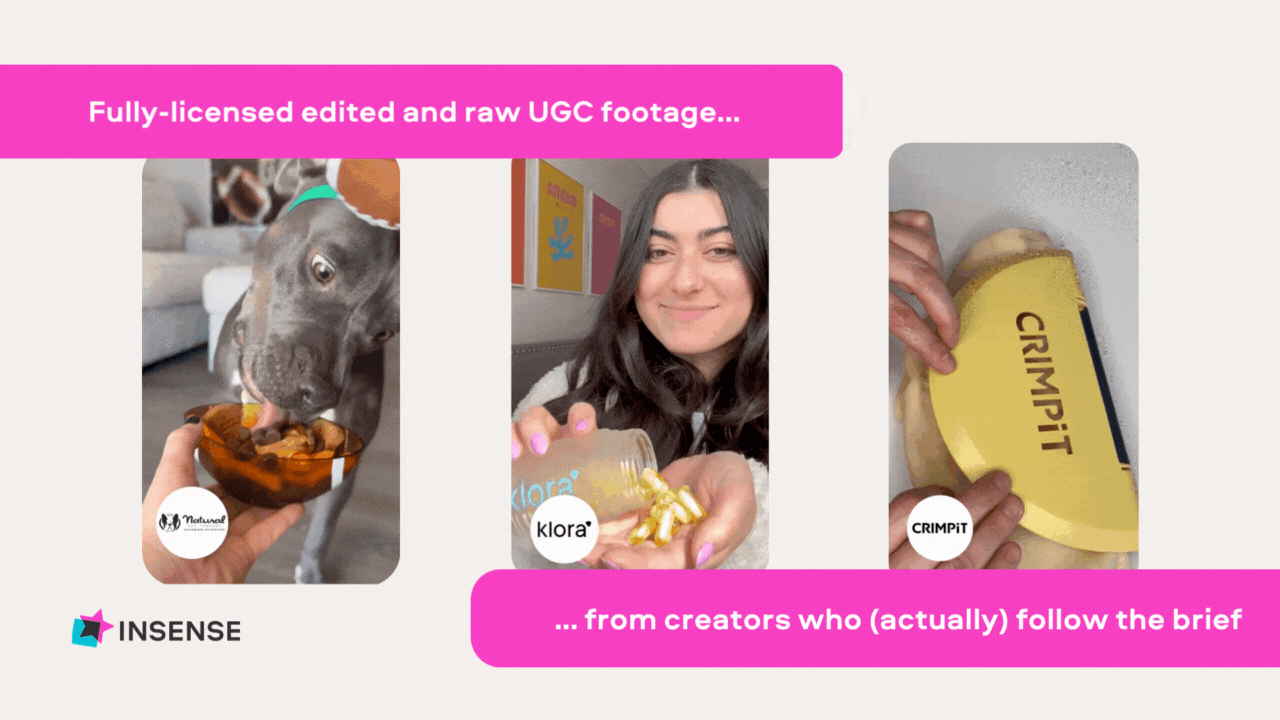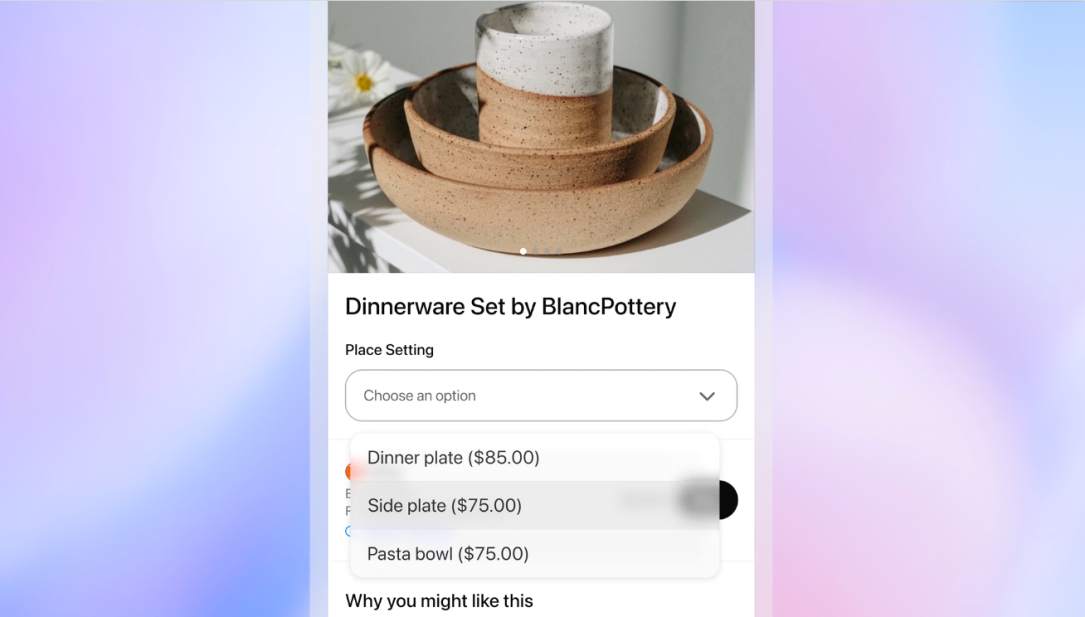PDP mistake killing your profits

Hey there Smarty 👋
Are you geared up to catch the latest and greatest in quick shorts?
And just a quick heads-up! If you stumbled upon us through a friend, make sure to subscribe here! That way, you’ll never miss out on the trending shorts.

Together with Insense
Find your perfect influencers in 48hrs - who actually follow the brief!

UGC delivers 4× higher CTRs and 50% lower CPC than traditional ads.
But... trying to source & manage creators yourself is time-consuming.
You need Insense’s carefully vetted marketplace of 68,500+ UGC creators and micro-influencers from 35+ countries across the USA, Canada, Europe, APAC, and Latin America.
Major eComm brands are using Insense to find their perfect niche creators and run diverse end-to-end collaborations from product seeding and gifting to TikTok Shop and affiliate campaigns, and whitelisted ads.
- Quip saw an 85% influencer activation rate with product seeding
- Revolut partnered with 140+ creators for 350+ UGC assets
- Matys Health saw a 12x increase in reach through TikTok Spark Ads
Try Insense yourself.
Book a discovery call by October 3rd and get a $200 bonus for your first campaign.

⚡Your PDP Templates Are Silent Profit Killers
Most DTC brands still treat every product page the same. A $30 add-on balm and a $150 subscription kit get identical layouts, same scroll pacing, same storytelling weight. But when your $120+ hero SKU funds referrals, retention, and margin velocity, giving it the same PDP footprint as an impulse buy is silent profit decay.
The fix: design PDPs with scroll weight that matches LTV contribution, not just AOV.
1. The Scroll-to-LTV Curve
Conversion speed and compounding value operate on different clocks.
- Low-LTV SKUs need thrust, quick add-to-cart, minimal education.
- High-LTV SKUs need altitude, belief, proof, onboarding previews.
Think of scroll like lift velocity: the higher the long-term margin, the deeper the PDP must carry the buyer before commitment compounds.
2. Dynamic Layouts by Commitment Type
Not every high-margin product pays off instantly. Many, skincare regimens, gut health stacks, home systems, only deliver full value after 2–3 months. Their PDPs must pace future outcomes, not just today’s promise.
- Onboarding previews: “Here’s what changes at week 4, 8, 12.”
- Trust anchors: “92% of customers stayed for 90+ days.”
- Future curve visuals: Normalize delayed gratification.
- Above-the-fold micro-education: So buyers commit eyes-open.
This isn’t fluff, it’s belief architecture.
3. PDPs That Listen, Not Just Present
Static templates ignore context. Adaptive PDPs react:
- Returning visitor + high-ticket cart → show bundle builder above reviews.
- Subscription toggle selected → auto-expand education block below CTA.
- Scroll depth > 50% → trigger testimonial carousel to cut exits.
Pages that listen outperform pages that lecture.
4. Stress-Test Layouts Like Creative
Most brands A/B ads obsessively while leaving PDPs frozen. That’s backwards.
- Use SKU-class heatmaps: if 70% of visitors drop before bundle visibility on a $150 product, you’ve built a low-LTV layout for a high-margin SKU.
- Test short vs. long PDPs, then measure reorder velocity and CAC payback, not just week-one CVR.
- Track margin impact: a longer PDP may “lose” short-term CVR but win long-term retention compounding.
📊 Case Proof: Wellness Brand Reset
One wellness brand rebuilt their $150 hero PDP using Scroll-to-Margin Map™ principles:
- Added future curve visuals + onboarding previews.
- Auto-triggered bundle builder for carts > $100.
- Extended scroll pacing by ~40%.
Result: subscription attach +22%, CAC payback dropped from 94 to 68 days.
🧩 Cross-Category Fit
- SaaS: High-ARPU annual plans need onboarding previews and proof pacing, not the same checkout speed as a $9 tool.
- Digital Courses: Flagship programs require long-form trust anchors; a $27 ebook does not.
- CPG: A $20 impulse SKU can close in two swipes; a $200 kit needs altitude. Scroll weight must flex to the margin engine, regardless of category.
🖼 Visual Model: The Scroll-to-Margin Map
Picture a 2×2 grid:
- X-axis: SKU Value → Low to High
- Y-axis: Scroll Weight → Short to Long
- Top-right: Hero SKUs → Long PDPs with compounding proof.
- Bottom-left: Add-ons → Fast PDPs, zero friction.
- Top-left / Bottom-right: Traps, long scroll for low-margin items, or rushed layouts for compounding SKUs.
Your PDP isn’t a template, it’s a monetization engine. The higher the LTV, the more belief scaffolding it requires before conversion compounds.
Stop flattening SKUs into identical layouts. Start orchestrating scroll weight around margin velocity. When creative meets LTV pacing, you don’t just sell products, you engineer profit altitude.

Together with Wing
Your CRM Doesn’t Close Deals. People Do.

Founders need more conversions than leads.
Wing clients see 30-40% higher close rates, because they solve the biggest barrier that tools can’t: automation is great for tasks, but it doesn’t build relationships.
When prospects want a custom demo, a real conversation, or a quick resolution, sequences and CRMs fall short.
That’s where a Wing Assistant steps in:
1. Real conversations: prospects get timely, human responses
2. Smart nurturing: leads engaged before they cool off
3. Sales-ready handoffs: CRM updates, admin backend handled
Result? More deals closed per month, minus the $8K/month closer.
See why 10K+ founders choose Wing!

🛍️ ChatGPT Rolls Out Instant Checkout with ACP
OpenAI has introduced Instant Checkout inside ChatGPT, powered by its new Agentic Commerce Protocol (ACP) co-developed with Stripe. The move takes ChatGPT beyond product discovery into actual transactions, setting the stage for a new kind of AI-driven shopping.

The Breakdown:
1. Direct Purchases in Chat - U.S. users on Free, Plus, and Pro plans can now purchase items directly from Etsy sellers, with Shopify merchants such as Glossier, SKIMS, and Spanx joining soon. Payments work with cards, Apple Pay, and Google Pay.
2. Frictionless Order Flow - Shoppers can find products, confirm details, and complete checkout without leaving ChatGPT. Merchants remain in charge of fulfillment, payments, and the customer relationship.
3. The Agentic Commerce Protocol - ACP provides the framework for AI agents to handle purchases across different processors and platforms. It requires minimal backend changes, is open-sourced for developers, and is designed to scale across merchants of all sizes.
4. Built-In Safeguards - Every transaction needs explicit confirmation, with tokenized, encrypted payments and only essential data passed to merchants. The design keeps users in control while enabling secure expansion of AI-led commerce.
This launch positions ChatGPT as a potential new retail entry point, challenging Google, Amazon, Microsoft’s Copilot Merchant Program, and Perplexity. If shopping shifts into AI agents, control over product discovery, visibility, and transaction fees could move from traditional marketplaces to AI platforms.

🚀Quick Hits
🌐 Threads is now hiding Instagram hashtags behind a “Show hashtags” button to reduce clutter. Instead of spamming tags, Meta wants users to rely on topic tags and Communities for discovery.
🚨 LinkedIn is renaming key Campaign Manager elements next month: “Campaign Groups” will simply be called Campaigns, while “Campaigns” will become Ad Sets. No functional change, just industry-standard naming.
🧪 Google Ads is piloting a new Labs hub, centralizing experimental features like “missed growth opportunities.” Accessible in select accounts, it simplifies testing and discovery for advertisers ahead of full rollouts.
🛍️ Google AI Mode just got more visual, using its Shopping Graph of 50B listings and a new visual fan-out technique to deliver inspirational, image-rich shopping results that refresh hourly.

That’s a wrap for today! Tell us your thoughts about today's content as we line up more Shorts! And don’t hesitate to share this with someone who’d adore it. 🥰
